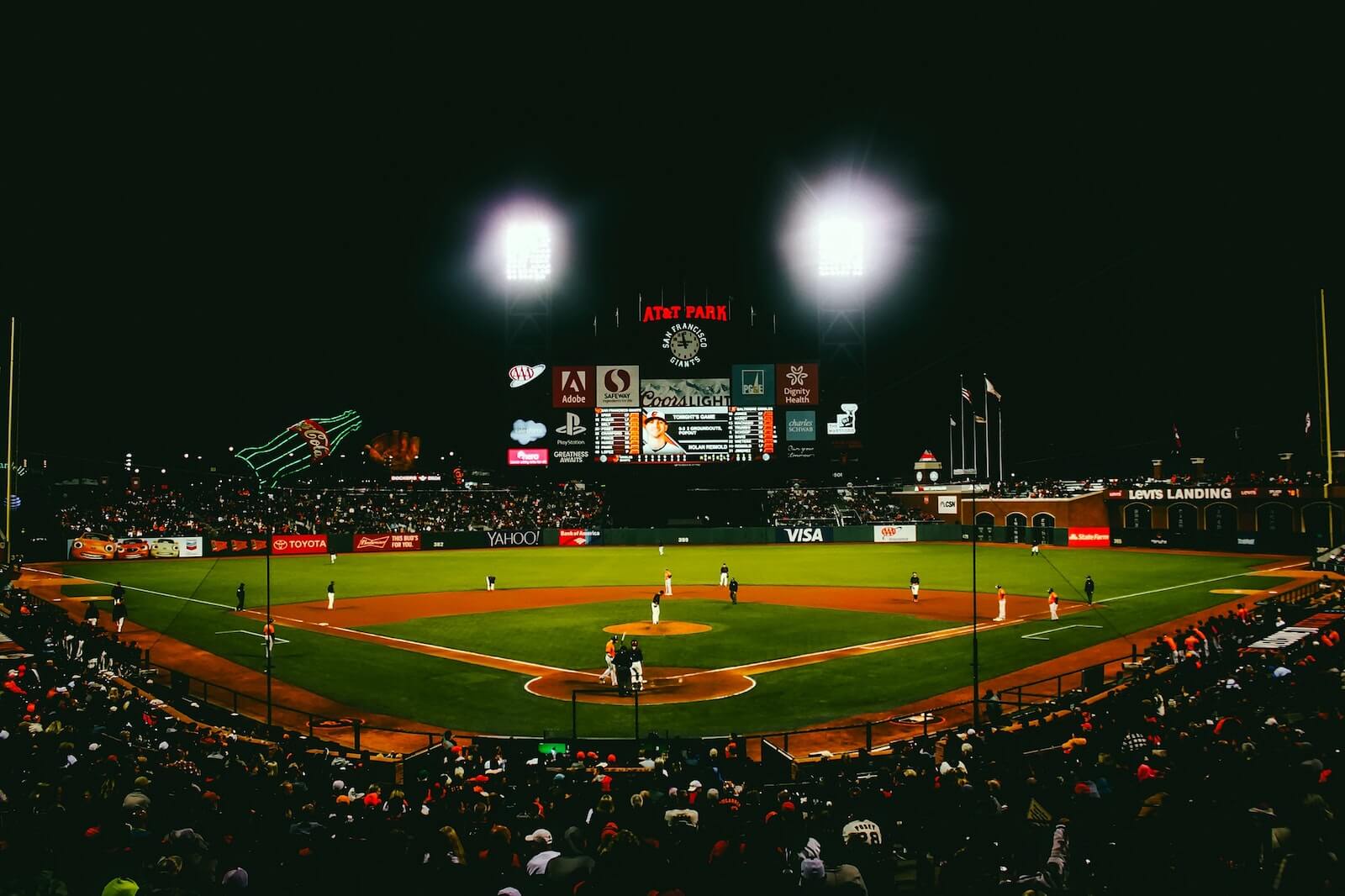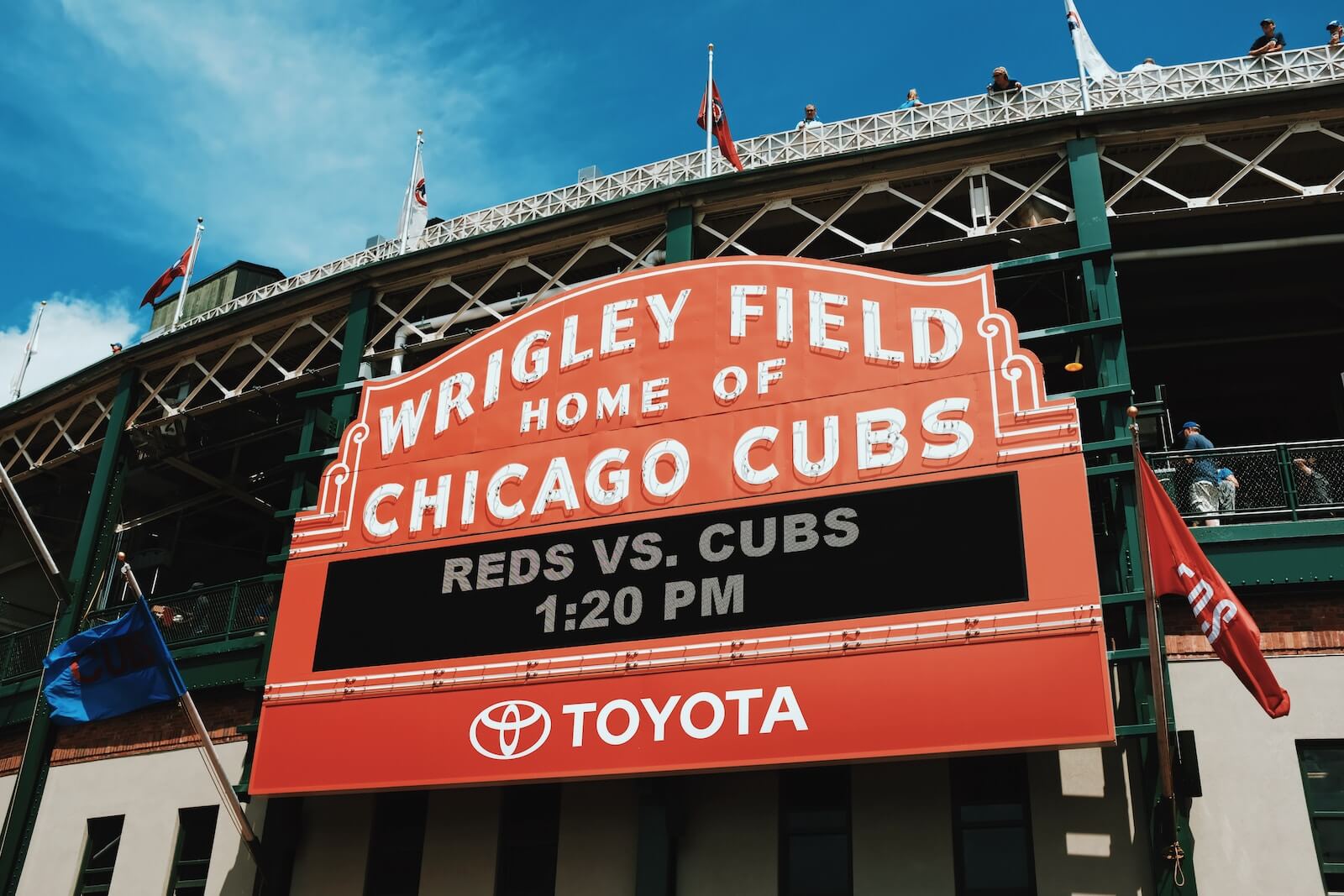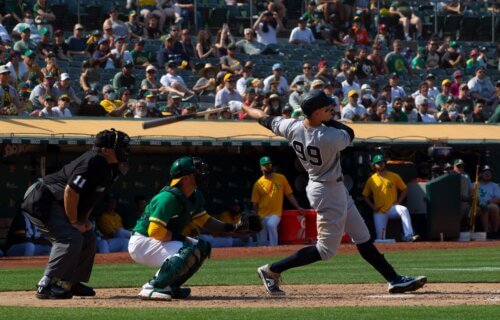HANOVER, N.H. — Baseball is back, and home runs are already flying out of the park. So, should we credit bad pitching or good hitting for this? A new study says the real cause of the power surge in Major League Baseball may actually be climate change! Researchers at Dartmouth College suggest that more than 500 home runs hit since 2010 are the result of warmer and thinner air due to global warming.
In the long history of baseball, the dead-ball era marks low-scoring period of the 1900s. Babe Ruth and other power hitters ushered in the modern live-ball era in the 1920s. Now, scientists say baseball could be on the cusp of a “climate-ball” era, where higher temperatures could increasingly determine the outcome of games — with more balls flying into the seats.
The study, published in the Bulletin of the American Meteorological Society, also projects that several hundred more home runs per season could be on the way thanks to continued warming. While the research team attributes only one percent of the sport’s recent home run surge to climate change, they add that rising temperatures could soon account for over 10 percent the home runs hit by 2100 — especially if greenhouse gas emissions continue to rise at present rates.
“There’s a very clear physical mechanism at play in which warmer temperatures reduce the density of air. Baseball is a game of ballistics, and a batted ball is going to fly farther on a warm day,” says senior author Justin Mankin, an assistant professor of geography, in a university release.

The researchers analyzed more than 100,000 MLB games and 220,000 individual hits to compare the number of home runs with the occurrence of unseasonably warm weather during those games. They then estimated the extent to which reduced air density in higher temperatures contributed to the number of home runs on a given day compared to other games in cooler weather.
Lead author and doctoral candidate Christopher Callahan, who conceived the study, notes that researchers accounted for factors such as the use of performance-enhancing drugs, the makeup of modern bats and balls, and the adoption of cameras, launch angle analytics, and other technology hitters use to optimize their power at the plate.
“We asked whether there are more home runs on unseasonably warm days than on unseasonably cold days during the course of a season,” Callahan says. “We’re able to compare those days with the implicit assumption that the other factors affecting batter performance don’t vary day to day or are affected if a day is unseasonably warm or cold.”
“We don’t think temperature is the dominant factor in the increase in home runs—batters are now primed to hit balls at optimal speeds and angles,” the study author continues. “That said, temperature matters and we’ve identified its effect. While climate change has been a minor influence so far, this influence will substantially increase by the end of the century if we continue to emit greenhouse gases and temperatures rise.”
The researchers also examined each major league ballpark to gauge how the average number of home runs per year could rise for every 1.8-degree Fahrenheit increase in global average temperatures. Researchers say the actual number of runs per season resulting from temperature changes could be higher or lower depending on individual gameday conditions.
The team discovered that the Chicago Cubs’ open-air ballpark, Wrigley Field, — which only hosts a limited number of night games each season — would experience the biggest spike in homers. Estimates show that 15 more home runs would fly out during these day games each season. Meanwhile, the Tampa Bay Rays’ domed and temperature-controlled Tropicana Field would remain steady at one home run more or less each year no matter how hot it gets outside. The Boston Red Sox’s iconic Fenway Park and the home of their arch-rivals, New York’s Yankee Stadium, land in the middle of this climate-ball era, experiencing nearly the same effect as temperatures rise at each ballpark.

Dr. Mankin says night games would lessen the influence that temperature and air density have on the distance that fly balls travel. Additionally, covered stadiums such as Tropicana Field would nearly eliminate the impact of hotter summers. While Mankin notes that curbing the rise in home runs — and the excitement they bring to a game — might seem counterproductive, there are other factors to consider as global temperatures rise. One of those is the exposure players and fans have to the heat.
“A key question for the organization at large is what’s an acceptable level of heat exposure for everybody and what’s the acceptable cost for maximizing home runs,” Mankin says. “Home runs are one pathway by which temperature is affecting game play, but there are other pathways that are more concerning because they have human risk attached to them.”
The researcher says the huge wealth of data available for MLB games in modern times provide scientists with a “unique opportunity” to discover the consequences of climate change on sports.
“Major League Baseball is a multibillion-dollar industry that is very data-rich, and that privilege allowed us to identify the effect of climate. This critical cultural touchstone for what it means to be American also happens to have a very salient relationship with physics in that temperature actually affects game play,” Mankin continues.
“It is really difficult to document how climate change is affecting cultural institutions and forms of recreation generally,” the researcher explains. “For most cultural institutions, we simply don’t have the data. In fact, we struggle to track climate impacts around the world because of data poverty. A project like this makes me worry that warming is affecting so many other things we just can’t document.”
“It’s important for us to recognize the potentially pervasive way that climate change has altered, or will alter, all the things we care about that are not necessarily encapsulated in heat waves or megadroughts or category 6 hurricanes,” Callahan says. “The effects of global warming will extend throughout our lives in potentially subtle ways.”
“Baseball is one of these ways that American society holds a mirror up to itself and global climate change is just another example—baseball is not immune to it,” adds study co-author Professor Jeremy DeSilva.
“This kind of study can be an entry point to understanding a phenomenon that is affecting the planet and every individual on it,” DeSilva concludes. “Maybe people who otherwise wouldn’t have will think about, and have a bigger conversation about, the more impactful and dangerous aspects of climate change once they know how it’s affecting this quintessential game in the history of our country.”
South West News Service writer Stephen Beech contributed to this report.


Is there anything not caused by climate change?